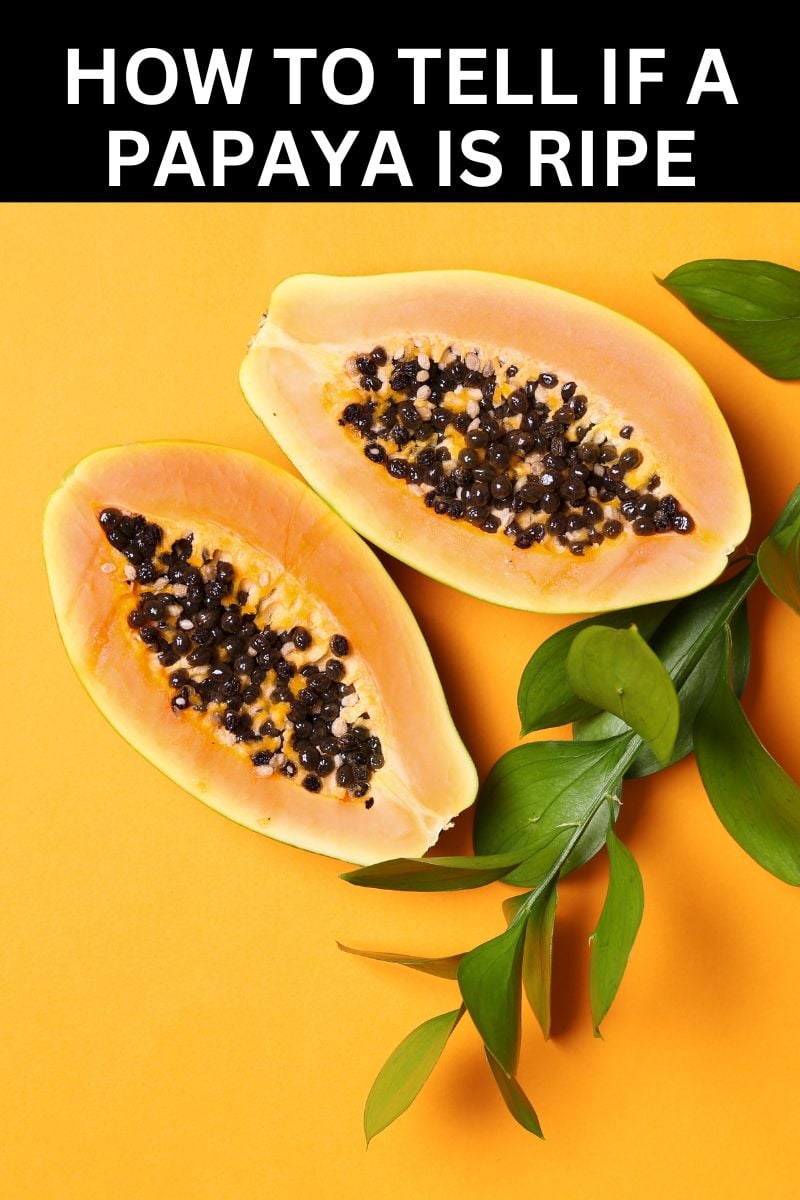Papayas are tropical gems known for their sweet taste, vibrant color, and a plethora of health benefits. Rich in vitamins A, C, and E, this luscious fruit is a delightful addition to smoothies, salads, and desserts. However, selecting a ripe papaya can be a bit tricky, especially if you’re unfamiliar with the signs of ripeness. Fear not! This guide will walk you through ten surefire ways to determine if a papaya is ripe and ready to enjoy.
1. Skin Color Transformation
One of the most noticeable indicators of a ripe papaya is its skin color. Unripe papayas are typically green, but as they ripen, the skin transitions to a golden yellow or orange hue. Depending on the variety, some papayas may retain a slight green tinge even when ripe. Look for a fruit that is predominantly yellow or orange for the best flavor.
2. Gentle Softness to the Touch
A ripe papaya should yield slightly under gentle pressure, similar to a ripe avocado or peach. Press your thumb lightly against the skin; if it gives a little, it’s likely ripe. Be cautious not to press too hard, as overly soft spots may indicate bruising or over-ripeness, which can affect the taste and texture.
3. Sweet, Musky Aroma
Use your sense of smell to detect ripeness. A ripe papaya emits a sweet, musky fragrance, especially near the stem end. If the fruit has little to no aroma, it’s probably not ripe yet. Conversely, an overly strong or fermented smell could mean the papaya is past its prime.
4. Smooth Skin with Minor Blemishes
Inspect the skin for blemishes and imperfections. While some small black spots or freckles are normal and don’t affect the fruit’s quality, large soft spots or mold indicate spoilage. The skin should be smooth and free from significant cuts or bruises.
5. Heaviness for Its Size
Pick up the papaya and gauge its weight. A ripe papaya will feel heavy for its size due to the high water content and fully developed flesh inside. This heaviness is a good sign that the fruit is juicy and ripe.
6. Yellowing at the Stem End
Check the area around the stem. If it’s turning yellow or orange, it’s a positive sign of ripeness. The stem end is often the last part of the papaya to ripen, so a change in color here indicates that the fruit is likely ready to eat.
7. Slightly Wrinkled Skin
Some varieties of papaya develop slight wrinkles on the skin as they reach peak ripeness. These wrinkles suggest that the fruit is soft and juicy inside. However, excessive wrinkling may indicate that the papaya is overripe, so aim for minimal skin wrinkling.
8. Hollow Sound When Tapped
Gently tap the papaya with your knuckles. A ripe papaya often produces a deep, hollow sound, indicating that the flesh inside is soft and ready to eat. This method isn’t foolproof but can be a helpful additional indicator when combined with other signs.
9. Shape and Fullness
Observe the shape of the papaya. A ripe papaya tends to have a full, plump shape with a slightly rounded bottom. If the fruit appears shriveled or has indentations, it may not be ripe or could be dehydrated.
10. Internal Seed Color
While this method requires cutting the fruit open, it’s a definitive way to assess ripeness. The seeds of a ripe papaya are black and encased in a gelatinous substance. If the seeds are white or pale, the fruit is unripe. Remember that once you cut the papaya, it should be consumed promptly to enjoy its optimal taste and texture.
Additional Tips for Ripening Papayas at Home
If you find yourself with an unripe papaya, don’t worry—you can ripen it at home. Place the papaya in a paper bag with a banana or apple, which emit ethylene gas, a natural ripening agent. Keep the bag at room temperature, and check the fruit daily for signs of ripeness using the methods above.
Storing Ripe Papayas
Once your papaya is ripe, you can store it in the refrigerator to slow down the ripening process and extend its shelf life by a few days. To preserve cut papaya, remove the seeds, cover the fruit tightly with plastic wrap or store it in an airtight container, and refrigerate. Consume it within two days for the best flavor and freshness.
Conclusion
Selecting a ripe papaya doesn’t have to be a guessing game. By paying attention to visual cues, touch, smell, and even sound, you can confidently choose a delicious, ripe papaya every time. Whether you’re a fan of enjoying it fresh, blending it into smoothies, or adding it to savory dishes, knowing how to pick the perfect papaya will enhance your culinary experience.
So next time you’re at the market, use these ten tips to find that perfectly ripe papaya. Your taste buds will thank you!
